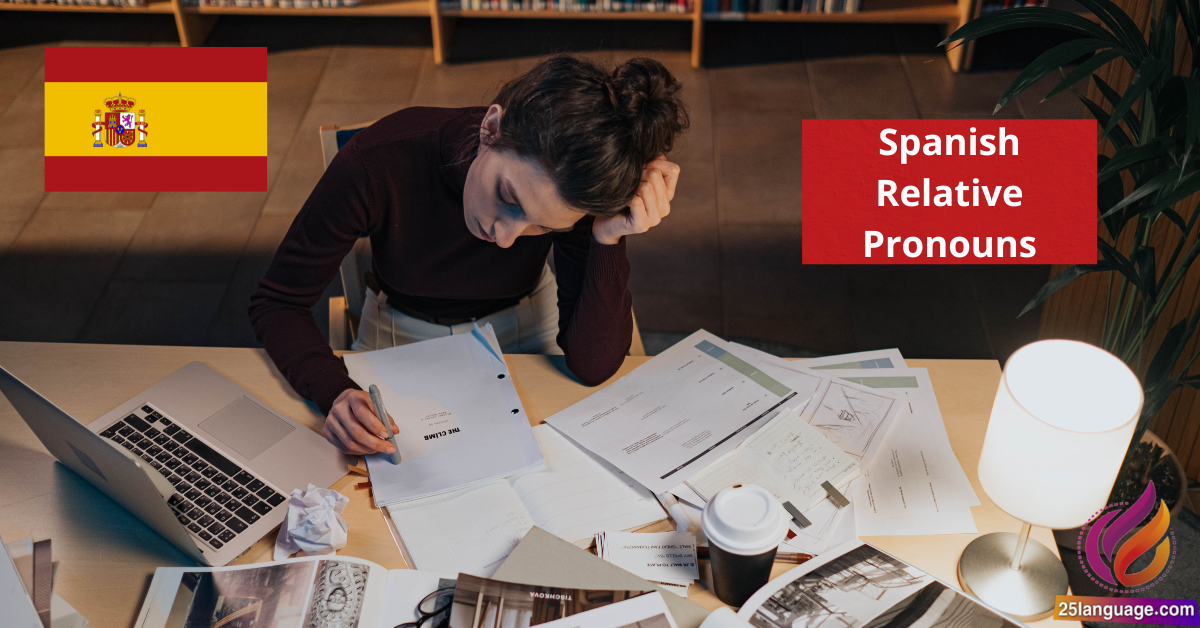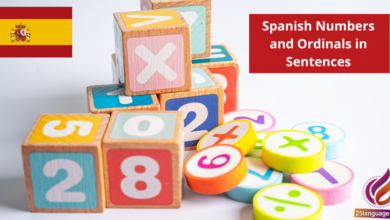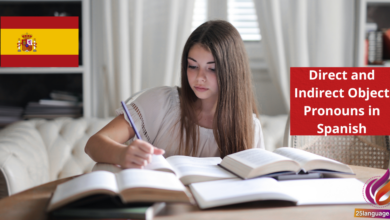Spanish Relative Pronouns

Understanding relative pronouns is like unlocking a secret door to richer, more intricate Spanish sentences. Words like “que,” “quien,” and “cuyo” connect ideas and add depth to your conversations. They allow you to merge thoughts seamlessly, making your language both fluid and expressive. In this lesson, you’ll discover how to use these key pronouns correctly, enhancing your Spanish fluency and enabling you to connect wiht others in a more meaningful way.
Unlocking Spanish Relative Pronouns: Understanding Que,Quien,and Cuyo
Relative pronouns in Spanish,such as que,quien,and cuyo,are essential for connecting clauses and providing additional details about nouns. Understanding their usage can significantly enhance sentence complexity and coherence in Spanish. The pronoun que is the most versatile and is used for both people and things. As an example, in the sentence La casa que compré es hermosa. (The house that I bought is stunning), que links la casa with the additional information about it being bought. It’s important to remember that que dose not change form, nonetheless of whether it refers to a singular or plural noun.
The relative pronoun quien is specifically used for people and often appears in the context of describing them or providing more information. For example, in La mujer quien habló en la reunión es mi madre. (The woman who spoke at the meeting is my mother), quien refers directly to la mujer and is the subject of the information being added. On the other hand, cuyo indicates posession and must agree in gender and number with the noun it modifies. An example is El libro cuya portada es roja es interesante. (the book whose cover is red is interesting), where cuyo connects the possession (the cover) back to the noun (the book). The following table summarizes these pronouns:
| Spanish Example | Rule | English translation |
|---|---|---|
| La casa que compré es hermosa. | Used for things. | The house that I bought is beautiful. |
| La mujer quien habló en la reunión es mi madre. | Used for people. | The woman who spoke at the meeting is my mother. |
| El libro cuyo portada es roja es interesante. | Indicates possession. | The book whose cover is red is interesting. |
Mastering the Use of Relative Pronouns in Spanish for Clarity and Precision
Relative pronouns in Spanish function similarly to those in English, helping to connect clauses and provide additional information about nouns.The most commonly used relative pronouns in spanish are que, cual, and quien. Each has its specific uses and can definitely help learners express clarity and precision in their sentences. Here are the key points to keep in mind:
- Que: Used for both people and objects. Example: El libro que leo es interesante. (The book that I am reading is interesting.)
- Cual: Used primarily in formal contexts and frequently enough requires a preposition. Example: La chica a la cual le hablaste es mi amiga. (The girl to whom you spoke is my friend.)
- Quien: Refers specifically to people and can be used with or without a preposition. Example: La mujer quien canta es talentosa. (The woman who sings is talented.)
it’s also important to note how relative pronouns relate to the noun they modify. For example, when using que, ensure it directly follows the noun without a comma: Los estudiantes que estudian tienen éxito. (The students who study are successful.) In contrast, quien is suitable for defining clauses: El autor quien escribió el libro es famoso. (The author who wrote the book is famous.) Below is a summary table to help visualize the different relative pronouns and their usage:
| Spanish Example | Relative Pronoun Used | English Translation |
|---|---|---|
| El coche que compré es nuevo. | Que | The car that I bought is new. |
| La casa a la cual fui es hermosa. | Cual | The house to which I went is beautiful. |
| El hombre quien trabaja aquí es amable. | Quien | The man who works here is kind. |
Practical Applications of Relative Pronouns in Everyday Spanish Communication
Relative pronouns in Spanish, such as que, cual, quien, and cuyo, are essential for connecting clauses and providing additional information about nouns without repeating them. These pronouns help make sentences more fluid and cohesive. The most commonly used relative pronoun is que, which can refer to people or things. For instance, in the sentence la casa que compramos es bonita. (The house that we bought is beautiful.),que introduces the relative clause que compramos (that we bought) and specifies which house is being talked about. Other relative pronouns like quien and cual are used in more specific contexts: El médico quien me atendió es amable. (The doctor who treated me is kind.) highlights a person, while La única opción cual tenemos es viajar en coche. (The only option which we have is to travel by car.) emphasizes a selection among choices.
- Que: used for both people and things.
- Quien: specifically refers to people, often used after prepositions.
- Cual: Refers to things and is used similarly to “which” or “that” in English.
- Cuyo: Indicates possession, meaning “whose.”
| Spanish Example | Relative Pronoun Used | English Translation |
|---|---|---|
| El libro que leí es interesante. | Que | The book that I read is interesting. |
| La chica quien canta es mi hermana. | Quien | The girl who sings is my sister. |
| La playa, la cual es hermosa, está cerca. | Cual | The beach, which is beautiful, is nearby. |
| La persona cuya casa está allí es amable. | Cuyo | The person whose house is there is kind. |
Enhancing Your Spanish: A Deep Dive into Que, Quien, and Cuyo with Real-World Examples
In Spanish, the words que, quien, and cuyo play crucial roles as relative pronouns that provide additional information about nouns. Understanding their usage can significantly enhance your mastery of the language. Que is often used to refer to people, things, or concepts. For example:
- El libro que estoy leyendo es interesante. (The book that I am reading is interesting.)
- la casa que compramos es grande. (The house that we bought is big.)
This showcases how que links the clause to the noun it describes. In contrast,quien is exclusively used to refer to people and can be used in both restrictive and non-restrictive clauses. For instance:
- La mujer quien habla es mi madre. (The woman who is speaking is my mother.)
- Él, quien trabaja aquí, es muy amable. (He, who works here, is very kind.)
Note that quien is typically preceded by a comma in non-restrictive clauses.
The word cuyo, meaning “whose,” is used to indicate possession in a more formal context and must agree in gender and number with the noun it precedes. For example:
- El autor, cuya novela ganó un premio, es famoso. (The author, whose novel won an award, is famous.)
- La chica cuyos padres viajan a menudo es feliz. (The girl whose parents travel often is happy.)
This highlights the relationships between the subjects and the possessions described. To aid in grasping these concepts, here’s a simple table summarizing the key rules and examples:
| Spanish Example | English Translation | usage |
|---|---|---|
| El libro que estoy leyendo es interesante. | The book that I am reading is interesting. | Refers to a thing with que |
| La mujer quien habla es mi madre. | The woman who is speaking is my mother. | Refers to a person with quien |
| El autor, cuya novela ganó un premio, es famoso. | The author, whose novel won an award, is famous. | Indicates possession with cuyo |
To Conclude
hemos explorado juntos los pronombres relativos en español, como “que,” “quien,” y “cuyo,” fundamentales para construir oraciones más ricas y complejas.Recordemos que “que” se utiliza para referirse a cosas y personas, “quien” es ideal para hablar de personas en un contexto más específico, y “cuyo” establece una relación de posesión, añadiendo profundidad a nuestras descripciones.
Ahora que hemos adquirido estas herramientas gramaticales, los animamos a practicar su uso en su vida diaria. Intente construir oraciones que impliquen a personas y objetos que le rodean, o incluso comparta su día a día utilizando estos pronombres. La práctica es clave para dominar el español y, con el tiempo, notarán cómo su confianza y fluidez crecen.
¡Sigan adelante con su aprendizaje! Cada paso que den los acercará más a la maestría del español. Recuerden, la perseverancia es el secreto del éxito. ¡Hasta la próxima clase!





























